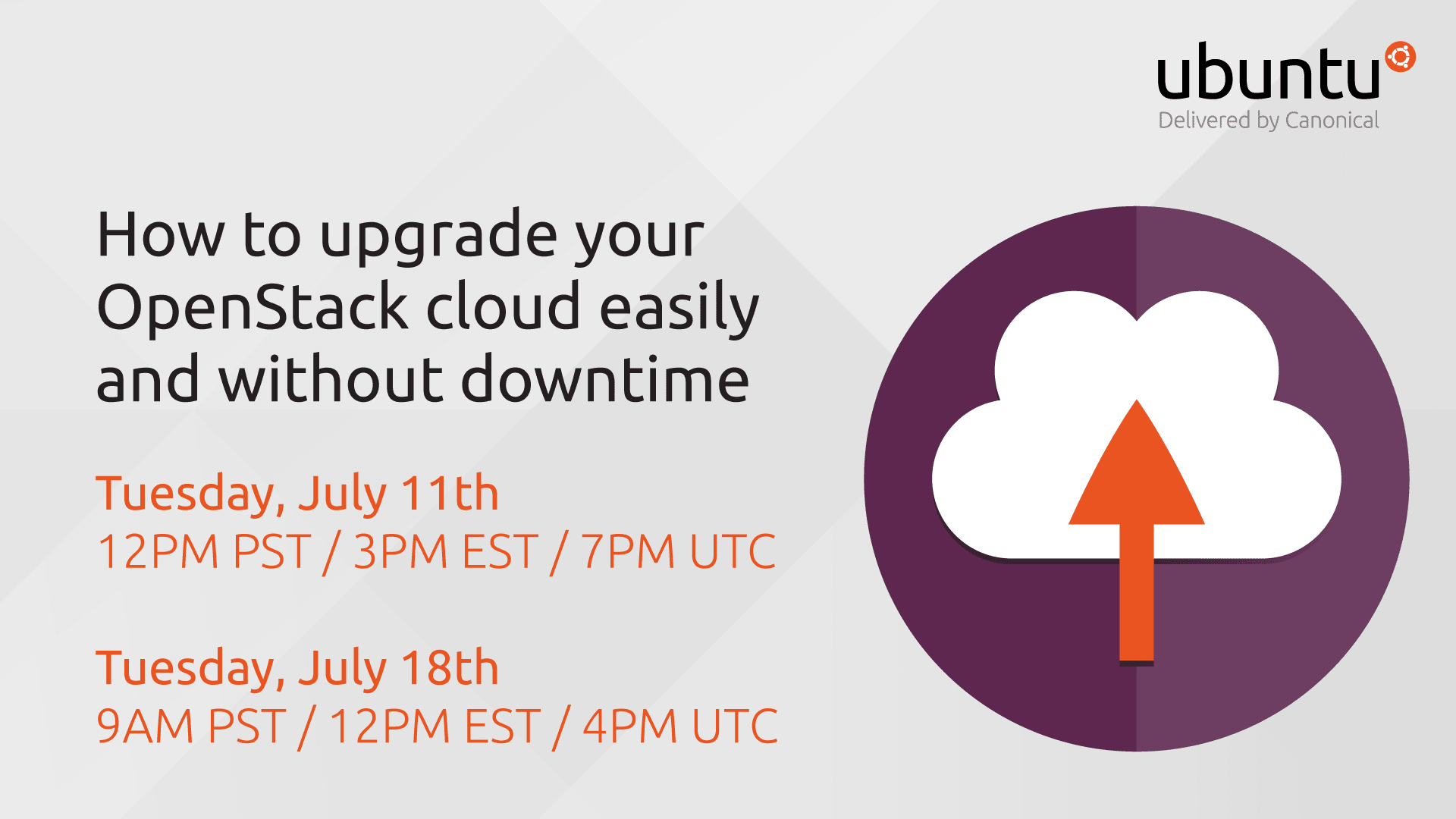Webinar: How to upgrade your OpenStack cloud easily, without downtime
Alexia Emmanoulopoulou
on 28 June 2017
Tags: cloud , containers , OpenStack , spotlight , stuckstack , update , webinar
Live webinar
It has become commonplace to see some OpenStack users choose to remain on old unsupported versions of OpenStack, forgoing new features and security updates rather than face the disruption, stress and complexity of upgrading. At Canonical we call this a StuckStack, a cloud that cannot or will not be upgraded.
In this webinar we will show you how to get unstuck and onto an OpenStack path where upgrades between releases are guaranteed. Access to compelling new features in OpenStack becomes easy as systems can be upgraded with little or no downtime.
Register for webinar
11 July | 18 July | on-demand
3 things you’ll learn
- How to migrate to an OpenStack cloud with guaranteed upgrades between release
- Why are upgrades easy with Canonical OpenStack?
- What you need to do to get your Stack unstuck, through a live demo of an upgrade from Newton to Ocata
This webinar will includes a live demo and Q&A.
Speaker
Mark Baker, OpenStack Product Manager, Canonical
Smart operations, optimal architecture, better pricing.
OpenStack and Ubuntu bring automated deployment and management that help you optimize infrastructure costs — no matter your industry or use case.
Newsletter signup
Related posts
Join Canonical at the first-ever African OpenInfra Days
For the second time, and in less than one month, Canonical is coming to East Africa! Three weeks ago, we had the first-ever UbuCon Africa, which was...
OpenStack cloud – happy 15th anniversary!
Happy birthday, OpenStack! It’s astonishing how fast time flies – fifteen years already. Yet, here we are: OpenStack cloud still stands as a de facto standard...
OpenStack PoC? No problem!
Setting up a proof of concept (PoC) environment is often one of the first steps in any IT project. It helps organizations to get to grips with the technology,...

